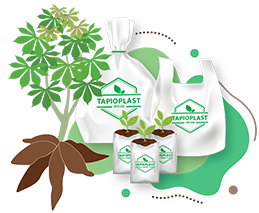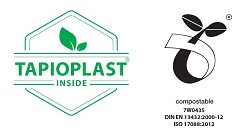Get to Know More about
Bio-Degradable Packaging
Nowadays, bio-degradable products have played a significant role in our daily life. Since our planet has faced tremendous effect and people become more aware of severe consequence, caused by exceeded plastic use. Waste Management is now more focused to go to proper way. Bio-degradable is the vital key and ideal choice to help saves the environment and balance of ecology system. However, there are various types of bio-degradable products that are especially suitable for particular use.
5 Types of Plastic Degradation
1) Photodegradation
Photodegradation is degradation of a photodegradable molecule caused by the absorption of photons, particularly those wavelengths found in sunlight, such as infrared radiation, visible light, and ultraviolet light. By this, it will not be degraded in opaque areas due to the lack of direct UV.
2) Mechanical Degradation
Mechanical degradation refers to macroscopic effects brought about under the influence of shear forces. These forces result in the formation of macro radicals. However, radicals can recombine in the absence of oxygen.
3) Oxidative Degradation
Oxidative degradation is an autocatalytic process of attack on the hydrogen atoms, to form hydroperoxides. The stability of polymers is thus inversely proportional to the number of hydrogen atoms with the carbon atoms present in the polymer chain.
4) Hydrolytic Degradation
Hydrolytic degradation occurs in polymers that are water-sensitive active groups especially those that take a lot of moisture.
5) Biodegradation
Biologically initiated degradation also is strongly related to chemical degradation as far as microbial attack is concerned. Microorganisms produce variety of enzymes which are capable of reaction with natural and synthetic polymers.
Source: MTEC

Bioplastic
Bioplastic is the plastic derived from natural material (bio-based plastic) that can be degradable in natural condition and produces gas, energy, carbon-dioxide, and biomass, by having renewable raw material such as sugar cane, tapioca, or plant fibers which help benefit the ecology system without any toxic residue to our environment.
Bioplastics are a large family of different materials
Bioplastics are not just one single material. They comprise of a whole family of materials with different properties and applications. According to European Bioplastics, a plastic material is defined as a bioplastic if it is either bio-based, biodegradable, or features both properties.
Bio-based: The term ‘bio-based’ means that the material or product is (partly) derived from biomass (plants). Biomass used for bioplastics stems from E.g. corn, sugarcane, or cellulose.
Biodegradable: Biodegradation is a chemical process during which microorganisms that are available in the environment convert materials into natural substances such as water, carbon dioxide, and compost (artificial additives are not needed). The process of biodegradation depends on the surrounding environmental conditions (e.g. location or temperature), on the material and on the application.
'Bio-based’ does not equal ‘Biodegradable’
The property of biodegradation does not depend on the resource basis of a material but is rather linked to its chemical structure. In other words, 100 percent bio-based plastics may be non-biodegradable, and 100 percent fossil-based plastics can biodegrade.
Benefits of Bioplastics
Bioplastics are driving the evolution of plastics. There are two major advantages of bio-based plastic products compared to their conventional versions: they save fossil resources by using biomass which regenerates (annually) and provides the unique potential of carbon neutrality. Furthermore, biodegradability is an add-on property of certain types of bioplastics. It offers additional means of recovery at the end of a product’s life.
Reference Information
https://www.european-bioplastics.org/bioplastics/
อ้างอิงข้อมูลจาก สมอ.สาร, 2556

